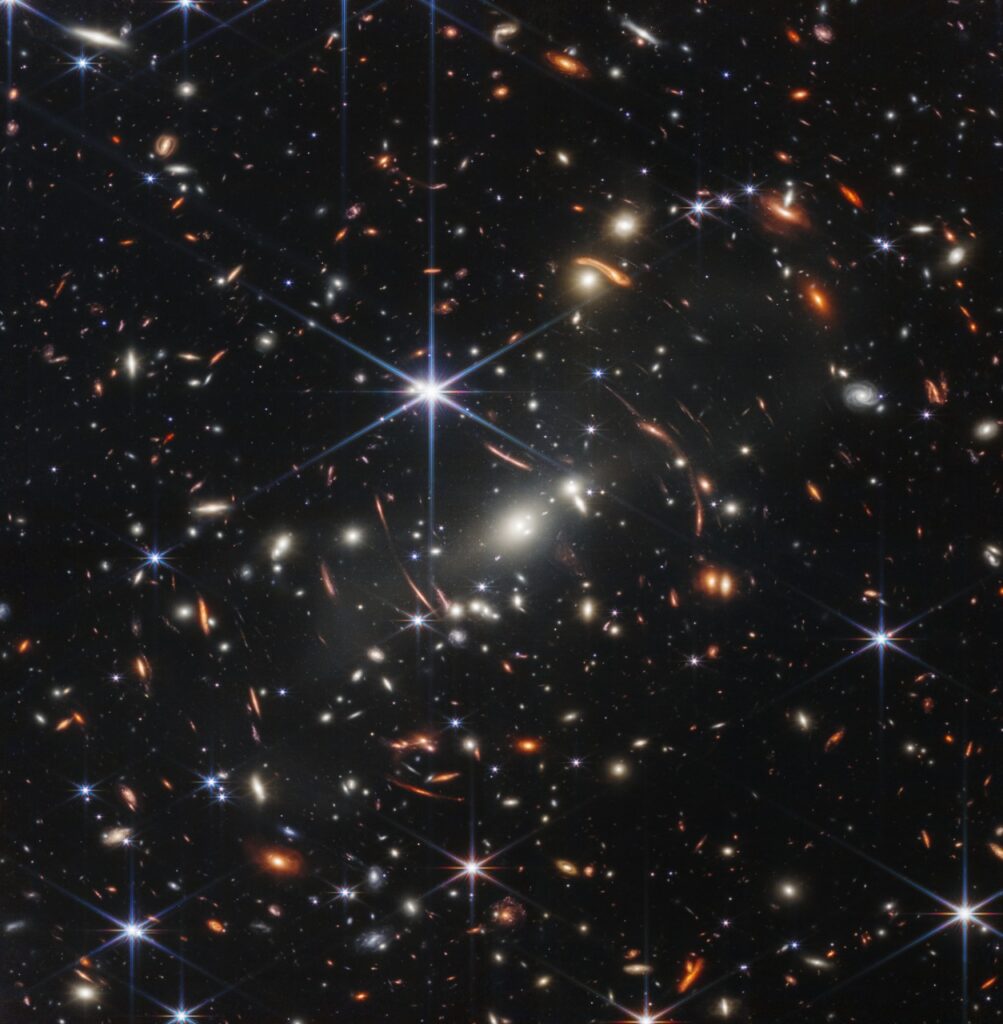
President Joseph Biden presented the image from the James Webb Space Telescope, which, in full color, has captured the highest resolution images of the infrared universe in history.
The Webb Space Telescope was launched from French Guiana in December 2021 and is now orbiting the Sun one million miles from Earth.
Biden and Vice President Kamala Harris received a preview of the image during a White House briefing by officials from the National Aeronautics and Space Administration (NASA), who discussed how this groundbreaking imagery will enable advances in nearly every branch of astronomy.
During the briefing, the President publicly displayed the first of the images: "Webb's First Deep Field," the "deepest" and sharpest infrared image of the distant universe ever produced.
"The Webb Space Telescope is a new window into the history of our universe. And today we're going to take a look at the first light shining through that window light from other worlds. Stars in orbit far beyond our own ... light from where stars were born and where they died, light from the oldest galaxies, the oldest documented light in the history of the Universe more than 13 billion years old, it's hard to fathom," said President Biden.
This image is filled with galaxies, some more than 13 billion years old, meaning they formed just after the Big Bang. In the coming days, NASA will release additional images, revealing details about the atmosphere of an exoplanet outside our solar system, the "stellar nurseries" where stars form, the galaxies that interact and trigger the formation of stars and black holes, and a glimpse of how stars die.
The Webb Space Telescope is an international program led by NASA with its partners, the European Space Agency (ESA) and the Canadian Space Agency.
Its revolutionary technology will study all phases of cosmic history over the past 13.5 billion years, from the interior of our solar system to the most distant observable galaxies of the early universe.
The image shows the SMACS 0723 cluster of galaxies packed with detail. Thousands of galaxies, including the faintest objects ever observed in the infrared, have come into Webb's view for the first time. This slice of the vast universe covers a patch of sky about the size of a grain of sand held outstretched by someone on the ground, NASA said.
"When this image is shared with the world, it will be a historic moment for science and technology, for astronomy and space exploration, for all of humanity," Biden stressed.
"This telescope embodies how America leads the world not by the example of our power, but by the power of our example, a partnership with others. It symbolizes the relentless spirit of American ingenuity and shows what we can accomplish, what we can discover not only about distant places but also about our own planet. That is why the federal government must
must invest in science and technology, more than we have done in the past". He added.
"These images will remind the world that America can do great things. And remind the American people, especially our children, that there is nothing beyond our capability. We can see possibilities that no one has seen before, we can go places no one has gone before. You've heard me say it over and over again but, America is defined by one word, possibilities," he stressed.
"If you were to hold a grain of sand on the tip of your finger at arm's length, that's the part of the universe you're looking at Just a little speck of the universe. And what you're seeing there are galaxies," noted NASA Administrator Bill Nelson, when questioned by President Biden as to what was visible in the image.
"You're seeing galaxies shining around other galaxies, whose light has been deflected. And you're seeing only a small portion of the universe," he said.
The official stressed that there are billions of galaxies with billions of stars and suns and this image is "our first glimpse".
"We're looking back over 13 billion light years, traveling at 186 thousand miles per second and that light you're seeing. One of those little specks has been traveling for over a billion years and, by the way, we're going further back, because this is just the first picture. They're going back about 13.5 billion years, and as we know the universe is 13.8 billion years old. We're going back almost to the beginning."
At the same time, he explained that, with the precision of the telescope, it will be possible to know if there are habitable planets or not, because it will be possible to determine the chemical composition of their atmosphere.
"We're going to be able to answer the questions we don't even know what the questions are yet. This is what's happening."
The telescope will give the ability to explore a wide range of questions that will help to understand the origins of the universe and our place in it.
The telescope is one of mankind's great engineering feats, as it is launched from Earth on a rocket and then deployed into space. Thousands of engineers and hundreds of scientists worked to make the telescope a reality, along with more than 300 universities, organizations and companies from 29 U.S. states and 14 countries.
Images from the Webb Space Telescope illustrate the great leaps in scientific and technological discovery that can be made with the leadership of the U.S. government, in collaboration with other countries.
You may be interested in: Katya Echazarreta, the engineer who has let girls know they can reach for the stars


